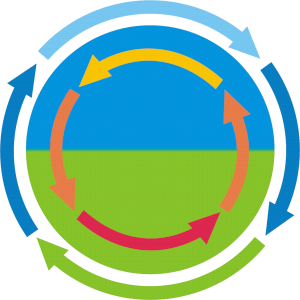C04
Snow data assimilation and its impacts on hydrological cycle and atmospheric fluxes
Dr. Bibi S. Naz
Forschungszentrum Jülich | +49 2461 619717 |
Prof. Dr. Gabrielle J. M. De Lannoy
KU Leuven, Belgium | +32 1637 6713 |
Summary
The project C04 aims to develop and implement a snow data assimilation scheme into the fully coupled Earth system model to optimally merges snow product observations with model simulations for improving continental-scale snow estimates. Further, we will investigate the impacts of improvements in snow estimates on the hydrological processes and on the atmosphere through the snow albedo effect and soil moisture-precipitation feedbacks. This project contributes to the development of assimilation strategies based upon remotely sensed observations to improve snow estimates in fully coupled models.
Graphical summary
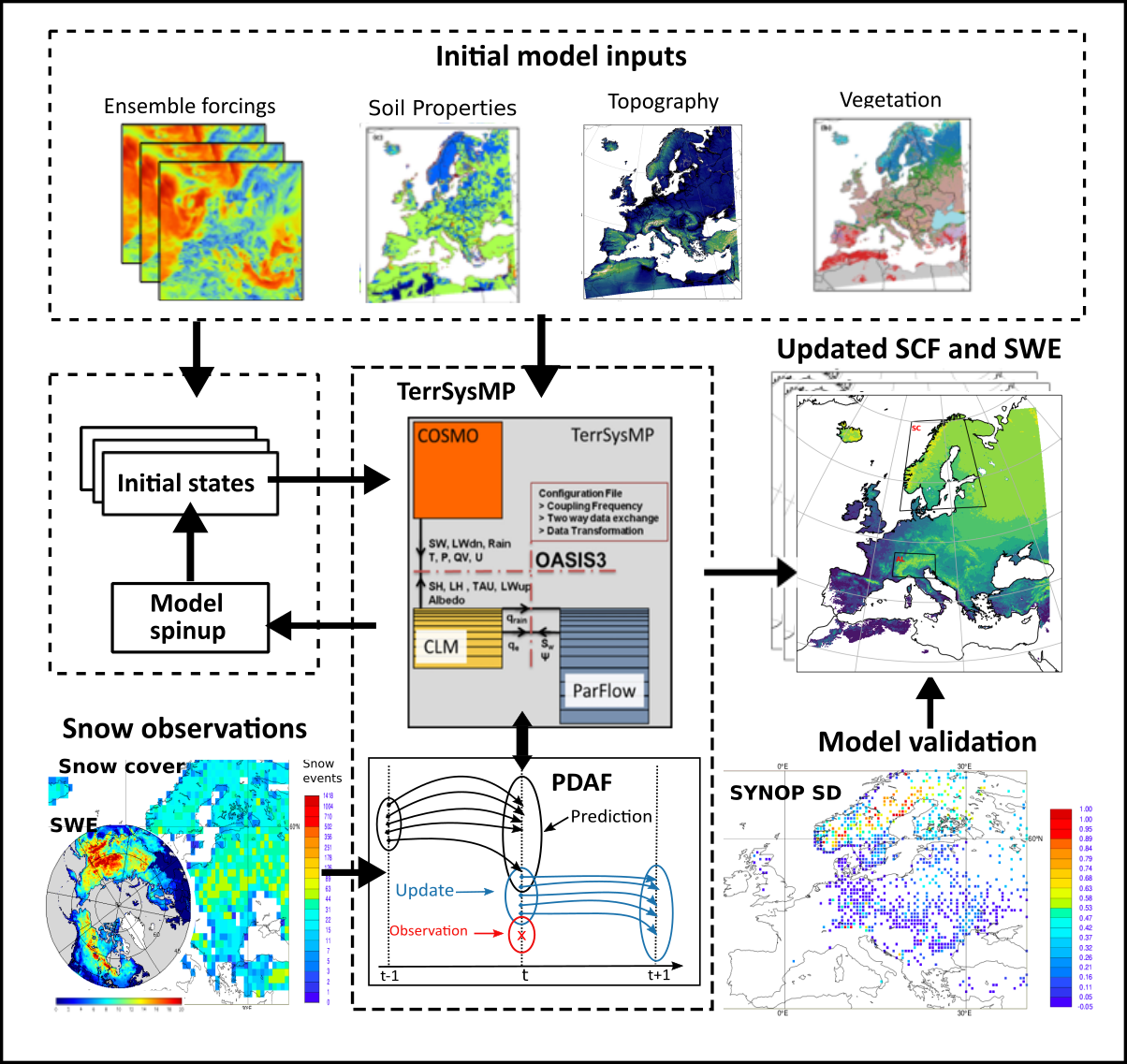
Figure 1. Graphical summary of snow data assimilation
Contribution to the CRC
The project will develop a framework for the assimilation of snow observations which will allow an accurate representation of snow processes in the CRC modeling system CLM5.0. This project will contribute to the CRC’s goal of the development of assimilations strategies based upon remotely sensed observations to improve model predication and furthering our understanding of the impacts of snow changes on surface energy and water budgets at regional to continental scales.
Approach
In this project we will implement the integrated Terrestrial Systems Modeling Platform (TSMP) over Europe at a spatial resolution of 3 km. Using this modeling setup, the goal of the present study is to investigate the potential for improving continental scale snow prediction, via integrating of high-resolution land surface modeling with assimilation of satellite-based SCF and SWE observations. Three experiments will be designed (1) the open loop (OL) simulation without data assimilation (DA), 2) the SCF DA only experiment and (3) the joint DA experiment of SCF and SWE. These experiments will be first performed at point scale using CLM5 which will allow for development of a snow DA scheme without the computational burden of a fully coupled simulation. Next, the fully coupled TSMP (CLM5-ICON) will be used to investigate the impacts of improvements in snow estimates on the atmosphere through snow albedo effect and the snow hydrological effect. We will develop the snow DA modeling framework for the European continent and focus our model validation on the European Alps and the Scandinavian regions.
Main results in 2022-2023
- Assessing uncertainties in snow-related variables using ensemble-based simulations of CLM5 over European Sites
To investigate uncertainties in model simulated snow variables, we performed ensemble-based simulations of CLM5 across 20 sites in French Alpine region to assess the impact of forcing data errors and parameter choices. We applied perturbations to ERA5 and various snow-related parameters, particularly those associated with snow cover fraction (SCF), snow water equivalent (SWE), and snow depth (SD) using uncertainty ranges of model parameters and input data from the literature. We evaluate 100 model realization against SD, SCF and SWE observations, with a focus on assessing model performance using statistical metrics such as correlation, RMSE and ensemble spread skill. Figure 2 show the comparison of simulated snow depth with in-situ observation for some example sites for the time period of 2011-2022. From this evaluation we found that for most stations, snow depth is overestimated by CLM5 compared to observations. Comparison of MODIS-based SCF with monthly cycle of SCF indicates that snow is melting later in CLM5. Meanwhile, Our results shows that model performance is most sensitive to input data errors than to model parameters as shown in Figure 3.
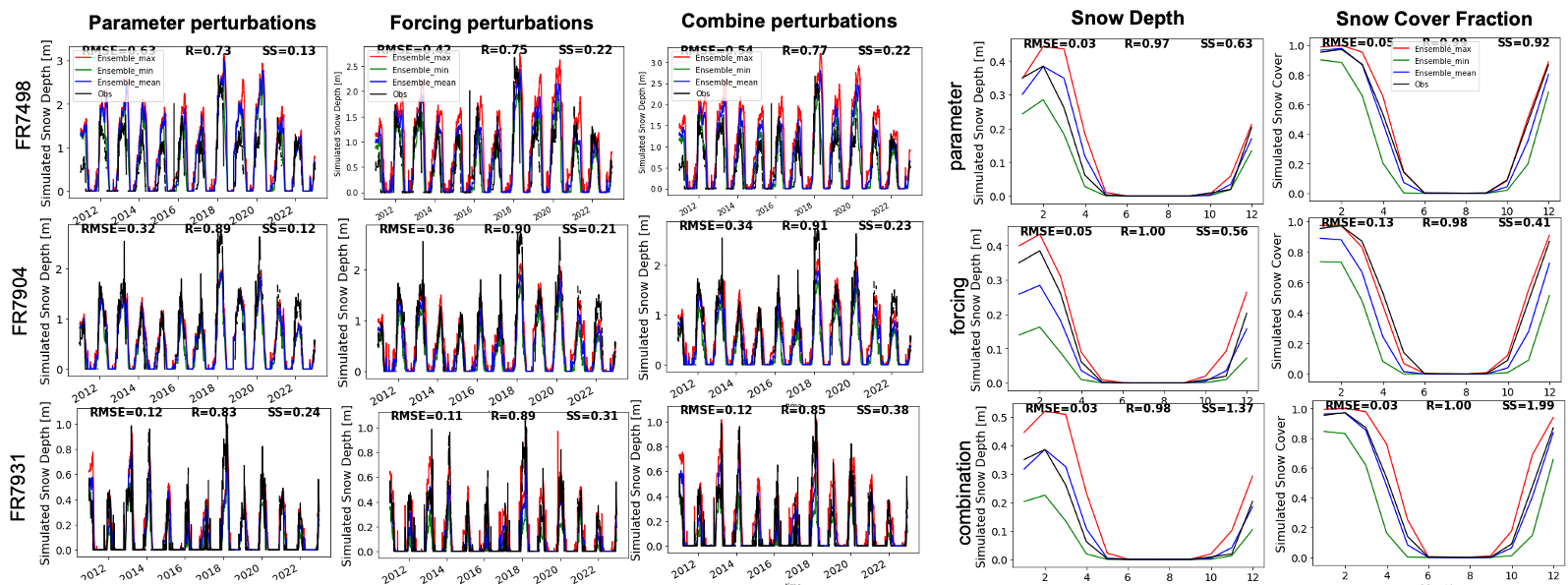
Figure 2. Snow depth comparison with in-situ daily snow depth observations for different perturbations experiments. and multi-year average monthly snow depth and snow cover fraction for one site.
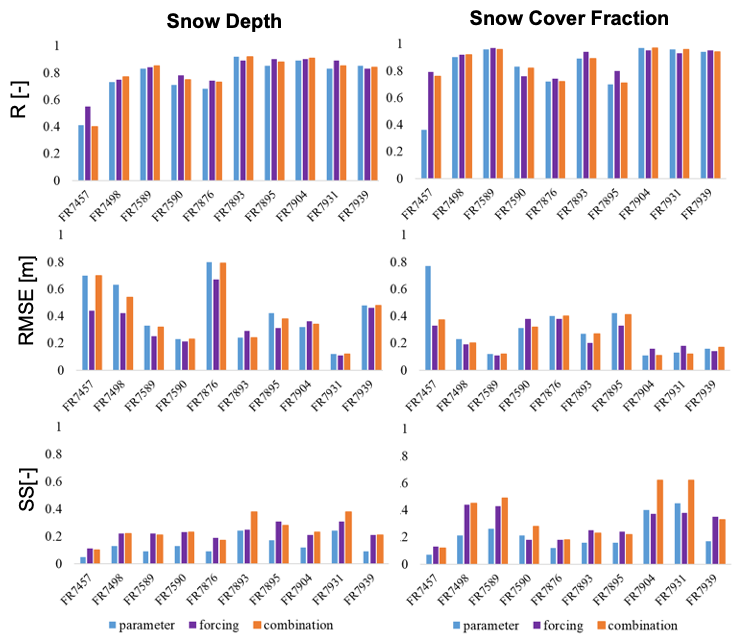
Figure 3. Model performance for different perturbations experiments.
- Continental-scale simulations of snow variables
We also evaluated the simulated snow variables over Europe using the Community Land Model (version 5) by comparing with the remote sensing observations to understand uncertainties in simulated snow over the continental scale. MODIS snow cover fraction and non-mountainous GlobSnow SWE (Pulliainen et al., 2018) data was used for evaluation of CLM5 model. Figure 4 and Figure 5 shows the difference between the CLM5 simulated SCF and SWE and remote sensing observations, respectively. CLM5 shows better performance in simulating SCF but overestimates SWE when compared to remote sensing products. These results indicate the need to improve the CLM snow estimates. Current work is focus on using data assimilation to improve the model prediction of snow.
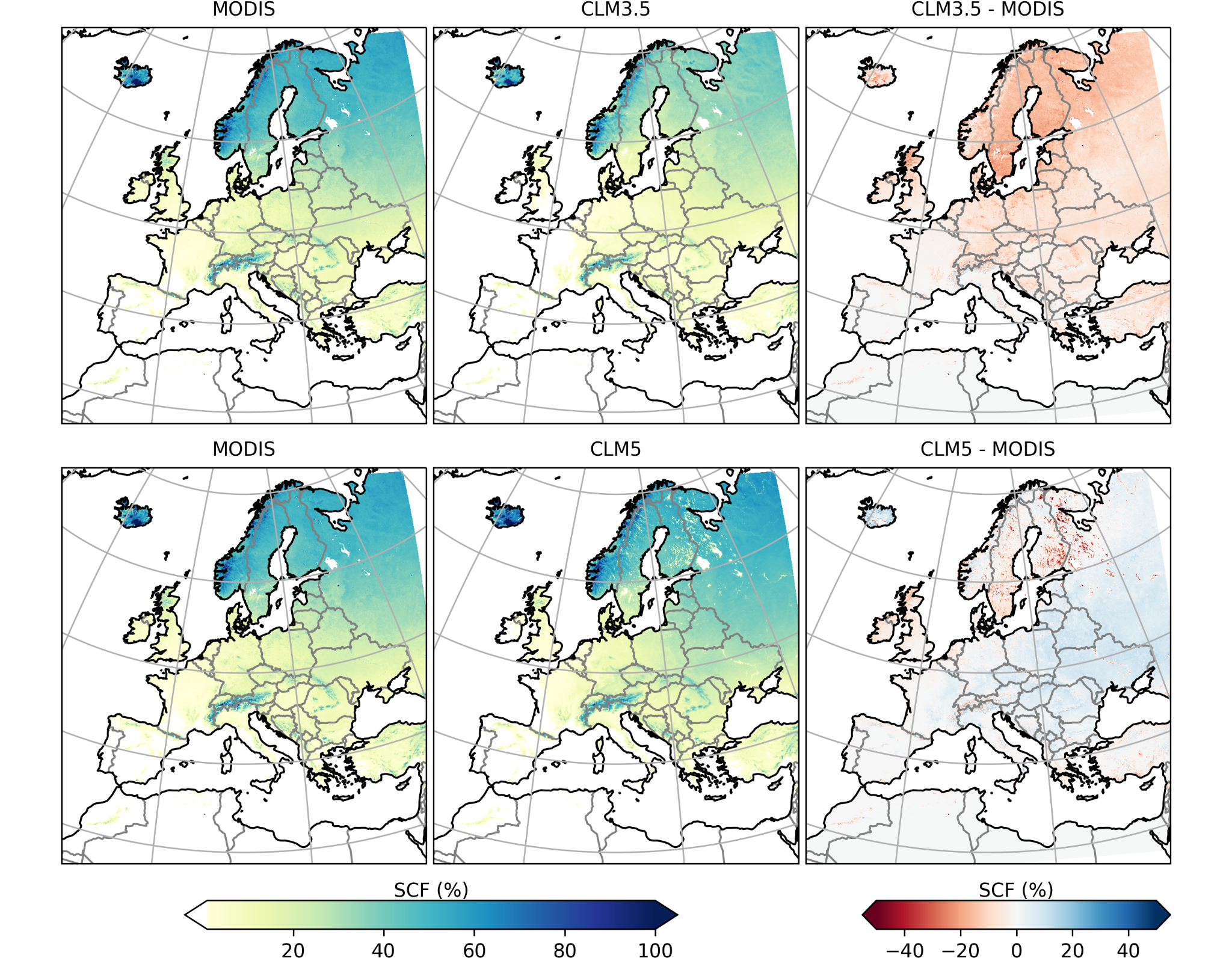
Figure 4. Comparision of CLM5 SCF with MODIS SCF averaged over the time period of 2001-2018.

Figure 5. Comparison of CLM5 SWE with GlobSnow SWE averaged over the time period of 2001-2018.
- Compilation of in-situ and satellite SNOW observations
We have collected in-situ and satellite-based observation such as MODIS snow cover, AMSR-E SWE and Sentinel-1 snow depth observations over Europe for the time period of 2000 - 2022. These observations are utilized for validating models and identify trends in the snowpack across Europe in recent decades.
Main results in 2024-2025
- Assessing uncertainties in snow-related variables using ensemble-based simulations of CLM5 over European Sites
To investigate uncertainties in model simulated snow variables, we performed ensemble-based simulations of CLM5 across 10 sites in French Alpine region to assess the impact of forcing data errors and parameter choices. We applied perturbations to ERA5 and various snow-related parameters, particularly those associated with snow cover fraction (SCF), snow water equivalent (SWE), and snow depth (SD) using uncertainty ranges of model parameters and input data from the literature. We evaluate 100 model realization against SD, SCF and SWE observations, with a focus on assessing model performance using statistical metrics such as correlation, RMSE and ensemble spread skill. Figure 6 shows the comparison of simulated and in-situ observed snow depth at selected sites during the period 2012–2022 for the combination perturbation experiment, while Figure 7 presents the comparison of simulated snow cover fraction over the period 2002–2022. The results show that simultaneous perturbation of both parameters and forcings led to a notable improvement in model performance, suggesting an integrated effect on the accuracy of SCF and SD simulations. Furthermore, perturbations of atmospheric forcings had a greater impact on simulation results than parameter perturbations alone (Guan et al., 2025).
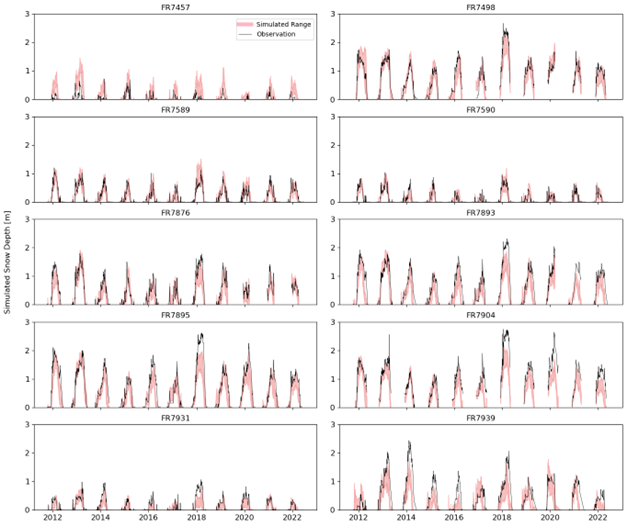
Figure 6. Snow depth time series plots of the ten sites for the combined perturbation experiment. The pink shaded area represents the simulated range between minimum and maximum ensemble values across 100 ensemble members, while the black line indicates the observed snow depth data.
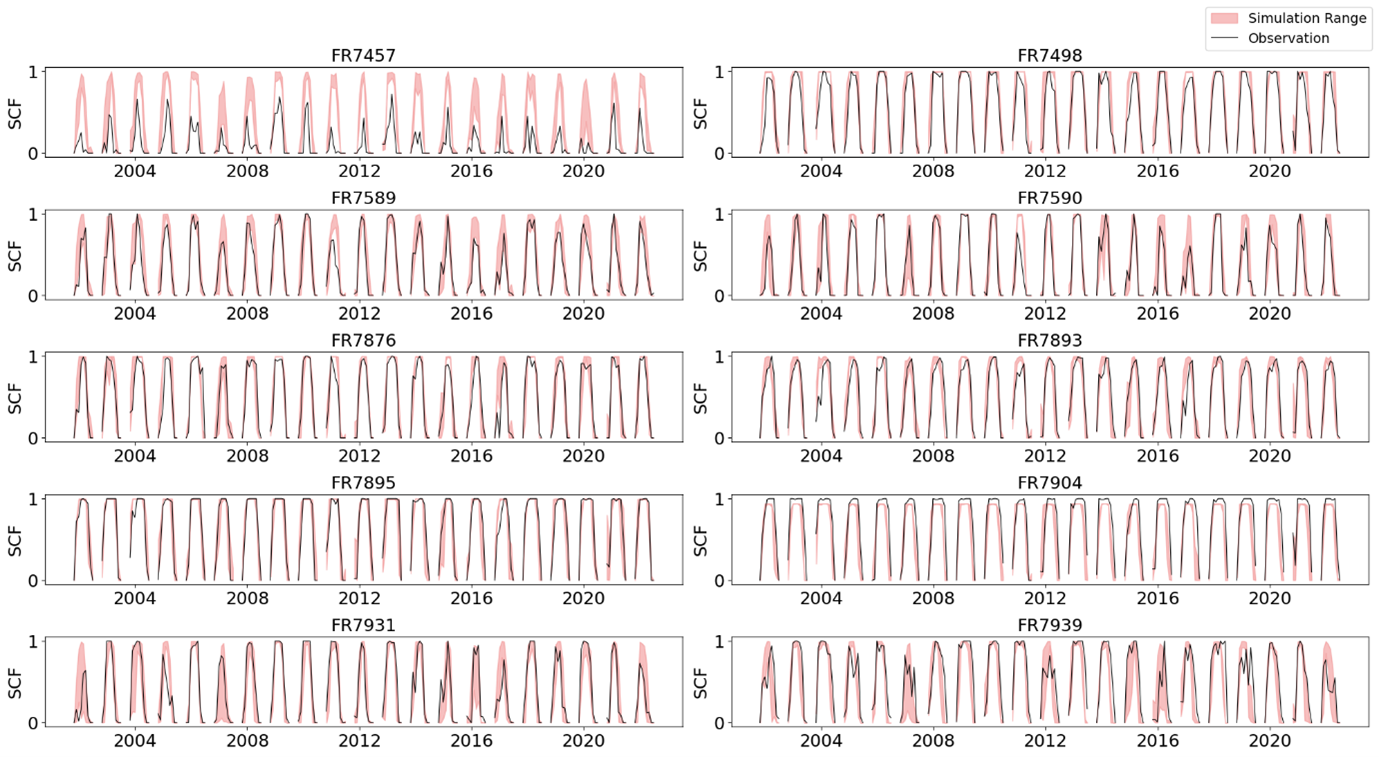
Figure 7. Snow cover fraction time series plots of ten observation sites for the combination perturbation experiment. The pink shaded area represents the simulated range between minimum and maximum ensemble values across 100 ensemble members, while the black line indicates the MODIS derived snow cover fraction (SCF) data.
References:
Guan, B., Hendricks Franssen, H.J., Vereecken, H., and Naz, B. S. (2025). Identifying uncertainties in snowpack variables using ensemble-based simulations of CLM5 over Alpine Sites. Under review at Journal of Hydrology.
- Snow data assimilation development and evaluation
We developed a snow data assimilation (Snow-DA) framework within eCLM-PDAF and tested its performance for both snow depth (SD) and snow water equivalent (SWE). As shown in Figure 8, the snow repartitioning function in eCLM-PDAF uses SD observations to update SWE through the correlation between SD and SWE in the PDAF state vector. The resulting increment is distributed across the CLM ice and liquid water variables for all snow layers. SD is then updated by eCLM based on the new SWE. After the update, CLM manages the merging and splitting of snow layers. The performance of the newly developed Snow-DA framework was evaluated using the same ten sites in the French Alps. Figures 9 and 10 show that the lowest-elevation site exhibits the greatest improvement, likely due to the open-loop (OL) overestimation providing more potential for correction, and a stronger influence of observation error (rms_obs = 0.2 m) under conditions of low snow depth. Stations with larger OL biases tend to show greater improvements. The data assimilation yields more effective corrections during the ablation period compared to the accumulation period. Ongoing work focuses on examining the impacts of snow data assimilation on water and energy flux components, including evapotranspiration (ET), soil water content (SWC), sensible heat (H), and latent heat flux (LE). Additionally, sub-regions will be delineated to assess the influence of snow data assimilation on streamflow.
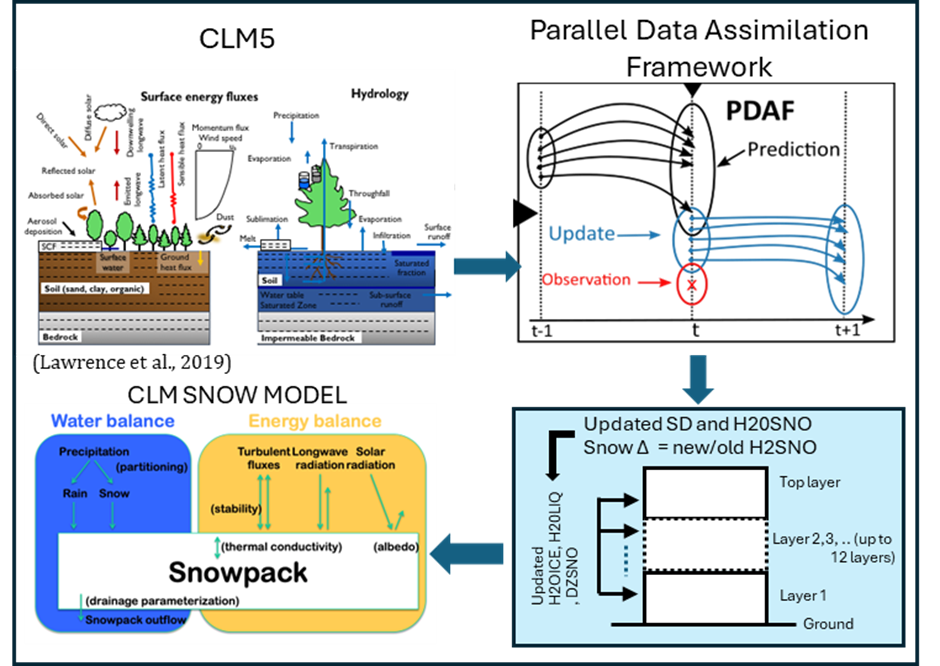
Figure 8. Schematic of snow data assimilation in eCLM-PDAF
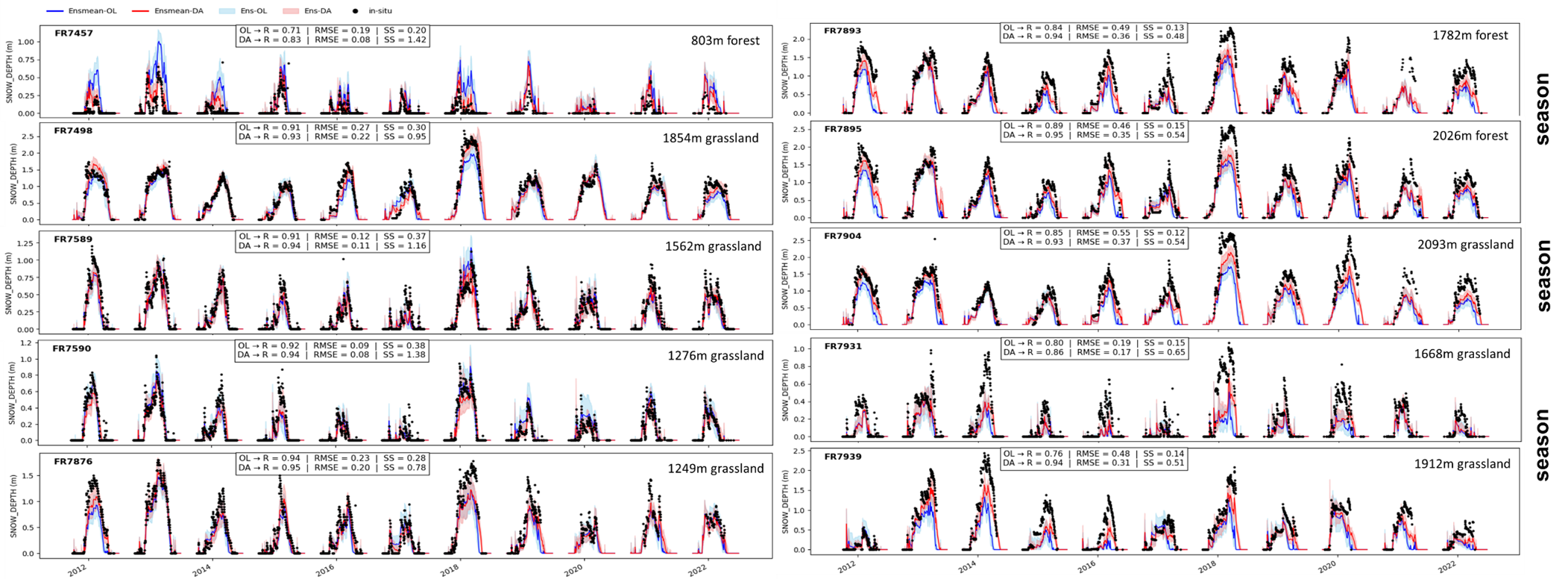
Figure 9. Time Series Comparison (DA: Case 6, rms_obs = 0.2 m)
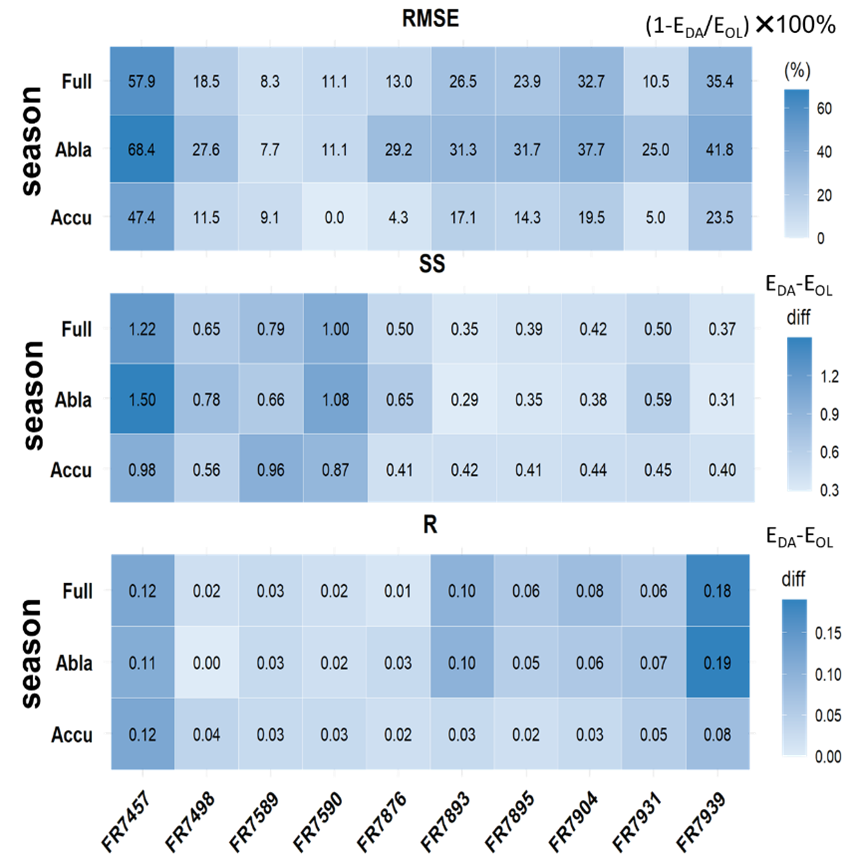
Figure 10. Statistical evaluation of model performance
